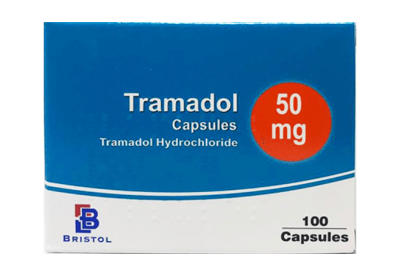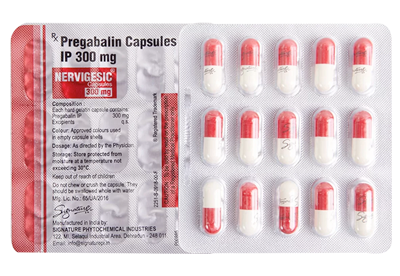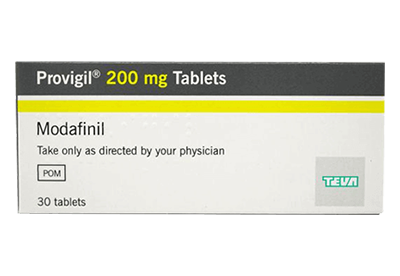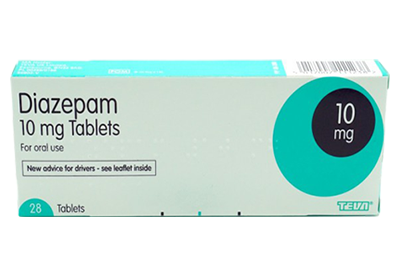
Tramadol
Tramadol is a medication that belongs to the opioid analgesic group of drugs, which are primarily used for treating moderate to severe pain. For most patients, this medication is their go-to choice when certain non-opioid painkillers like paracetamol and ibuprofen are not enough. Its clinical applications are broad, being used for treating acute discomfort after surgeries or severe injury, as well as chronic conditions like osteoarthritis or neuropathic pain.
£5.97 £3.77
Go to PharmacyDepending on its severity, tramadol is available in a number of strengths, which can help relieve discomfort. This flexibility has earned it a positive reputation, making it a preferred choice among those that are looking for a potent painkiller. Thanks to its flexible dosing, tramadol can also be part of a personalised regimen in order to address specific needs. Overall, this medication has allowed patients to return to their daily function and also improved their quality of life by removing the limitations and burdens of pain.
What is Tramadol?
This relief treatment is a synthetic analgesic which has become a reliable choice for dealing with moderate to severe discomfort caused by musculoskeletal and neuropathic conditions. This medication was first synthesised by the West German pharmaceutical company Grünenthal GmbH in 1962. In 1972, tramadol received its first patent, later entering the market under the name Tramal in 1977.
Having earned a positive reputation, other pharmaceuticals later released their own modified variant of this treatment under different names. Some of these include ConZip and Zydol, hard tablet variants that were approved in the mid-1990s. The most recent and popular alternative is Ultram, which is available in tramadol 50mg and 100mg dosages.
Since its first usage, this medication has remained a reliable treatment to deal with moderate to severe conditions. It has also become more accessible to many patients thanks to the help of online telehealth services.
How Tramadol Works
To reduce the pain, this analgesic uses two different mechanisms of action. Its primary function is to attach itself to mu-opioid receptors in the central nervous system, reducing the transmission of pain signals along the neural pathways. The second function of tramadol is to inhibit the reuptake of serotonin and norepinephrine, which prevents signals from entering the brain by increasing the activity of the body’s own descending inhibitory pathways.
This combined approach of both monoaminergic and opioid-mediated method makes it an effective solution for managing various sorts of discomfort. Its onset time is typically less than an hour, with a duration of four to six hours. For many patients, one tramadol 100mg tablet can provide enough pain relief to continue with their daily routine. Nevertheless, it is essential to consult with a medical professional about incorporating this treatment into a patient’s lifestyle.
Opioid Analgesics
Medications like tramadol have been in used for a very long time. Derived from the Opium Poppy plant, it is believed that the ancient Sumerians, Babylonians, Egyptians, Greeks, and Romans documented their first usage and utilisation as a pain-relieving treatment due to its sedative properties.
Around the 19th century, the first step towards creating analgesics like tramadol began with Friedrich Sertürner isolating morphine, the primary active alkaloid from opium. This allowed a deeper understanding of its analgesic properties as a potent painkiller. ‘Analgesic’ refers to a technical medical term for a pain-relieving drug, while ‘opioid’ refers to drugs that interact with the opioid receptors in the brain and nervous system. These receptors are part of the body’s natural pain signalling system.
In modern times, both doctors and patients alike use this medication due to its highly effective nature in managing moderate to severe acute discomfort. Tramadol has also been recognised as one of the most effective types of treatments for certain chronic illnesses.
Clinical Uses
There are a number of applications that a single tramadol 100mg tablet can be used for. The most common of these include, but are not limited to:
Post-Surgical
Tramadol is routinely administered to patients for managing acute pain after the initial post-operative procedures. This helps a patient by providing comfort and improving recovery.
Chronic Osteoarthritis
Chronic pain caused by joint degeneration can also be relieved by tramadol. It lessens discomfort in day-to-day tasks while allowing patients to move naturally while under its influence.
Neuropathic
Tramadol can be administered as an off-label treatment for certain nerve pain conditions like diabetes and multiple sclerosis. It is important to consult with a medical professional about leveraging its effect on serotonin and norepinephrine to modulate pain signals.
Acute Injury
Moderate to severe pain from sprains, fractures, and other injuries can be effectively managed with tramadol.
Painkiller Comparison Chart
| Drug | Onset of Action | Duration | Common Uses | Notes |
|---|---|---|---|---|
| Tramadol | < 1 hour | 4 – 6 hours | Moderate to severe pain; can be used for neuropathic conditions | This medication is a dual-action treatment with an opioid component. |
| Pregabalin | 1 hour | 6 – 12 hours | Neuropathic pain; anxiety | This anticonvulsant drug is used for treating conditions like fibromyalgia and partial onset seizures. |
| Paracetamol | 30 – 60 Minutes | 4 – 6 hours | Mild to moderate discomfort | This OTC analgesic has minimal anti-inflammatory effect; it is commonly used for fevers. |
This table shows a comparison and advantages that tramadol has over other commonly used analgesics.
Dosage and Administration
Although the standard tramadol 50mg dosage can help many patients manage their discomfort, each individual case requires a tailored approach. For most adults, one tablet every 4 to 6 hours can relieve moderate to severe discomfort. The maximum daily dosage of tramadol should not exceed 400mg.
Typically, the standard hard tablet or capsule should be swallowed whole with a glass of water. In the case of a liquid variant, it is recommended to mix a few drops of this medication into a glass of water, then drink the whole content of the glass. Tramadol should be taken at the same time every day, and each dosage should be evenly spaced out.
Safety and Potential Side Effects
Like any other painkiller, this medication has the potential to cause some side effects. Although not everyone can get them, patients are generally encouraged to stick with simple meals that are not too spicy, fatty, or sugary. Some common side effects of tramadol include:
- Dizziness
- Drowsiness
- Nausea
- Constipation
- Headaches
While these side effects mostly occur at the beginning of the treatment, they often diminish as the body adjusts. Although rare, some patients may experience severe dizziness, difficulty breathing, extreme drowsiness, seizures, or signs of serotonin syndrome.
Tramadol should not be mixed with alcohol, opioids or other central nervous system (CNS) depressants, as it carries a high risk of agitation, hallucinations and fast heart rate. In the case of the elderly or those with a history of seizures or impaired kidney/liver function, it is generally recommended to first consult with a medical professional in order to create a comprehensive treatment plan that can be incorporated into daily life.
Risks, Dependence and Precautions
Using tramadol for longer than intended carries a risk of dependence, misuse, and addiction. In many cases, patients who abruptly discontinue this medication can experience withdrawal symptoms such as nausea and vomiting, anxiety, insomnia and perspiration.
To ensure a patient avoids this risk and minimises the side effects that come after using tramadol 100mg, it is generally recommended to use it responsibly without double dosing, or taking more than is advised during consultation.
There are also several precautions that must be communicated to a medical professional about using this treatment to avoid any negative interaction. Patients who should first consult a doctor before taking tramadol include those with an allergic reaction to medicine, people who regularly experience seizures, have head injuries or difficulty breathing. It should also not be used for those with a history of addiction to alcohol, painkillers or recreational drugs.
Price of Tramadol
The cost can greatly vary on a number of factors. Some of these include strength, pack size, and the medical dispensary supplying it. In most cases, purchasing these medications from a local clinic can be very costly. For this reason, online pharmacies have generic alternatives that are listed with lower prices and add a number of advantages.
Here’s a look at a typical price range from an online pharmacy that are based in the UK:
| Pack Size (Tablets) | Strength | Price Range (GBP) |
|---|---|---|
| 30 | 50mg | £35 - £39 |
| 60 | 50mg | £65 - £69 |
| 90 | 50mg | £95 - £99 |
| 30 | 100mg | £39 - £43 |
| 60 | 100mg | £69 - £73 |
| 90 | 100mg | £104 - £108 |
The price of tramadol 50mg and tramadol 100mg is generally calculated per pack, with larger pack sizes often offering a lower cost per tablet. To save money on every purchase, customers and patients alike are advised to compare their options in order to find the most cost-effective treatment that will manage their discomfort.
Frequently Asked Questions
What is the drug tramadol?
It is an effective pain reliever that falls within the category of opioid analgesics. Tramadol changes how the brain and nerve system perceive pain, it is mostly used to treat and manage moderate to severe discomfort in adults.
Is tramadol an opioid?
Yes, this medication belongs to the opioid class of drugs, and it is considered an opioid agonist. It works by binding certain receptors in the brain and inhibiting the reuptake of the neurotransmitter serotonin. This allows it to relieve moderate to severe pain within an hour of ingestion.
How Long does it take for tramadol to start working?
With a single tablet, most patients are able to feel relief from discomfort in an hour of ingestion. Typically, one tramadol 100mg tablet has a peak efficiency of two to three hours. Depending on the severity of the condition and the tolerance of a patient, its effect can last upwards of 4 to 6 hours.
Will tramadol cause constipation?
The feeling of constipation is a common reaction to this treatment. In order to minimise the recurrence of side effects, patients are encouraged to maintain adequate hydration, eat the recommended intake of fibre, and perform physical activities.
Can you take tramadol with paracetamol?
Yes, it is typically considered safe to use both of these medications at the same time. Paracetamol has a different mechanism of action; this provides a synergised relief against discomfort. If patients are taking additional medication, they should discuss potential contraindications with a healthcare provider.
How Can I avoid Dependence and withdrawal symptoms?
To minimise the risk of dependency on tramadol, it is generally recommended to begin and end this treatment on the lower tramadol 50mg variant. It is also recommended to avoid sudden cessation; instead, a medical professional will create a gradual reduction schedule to safely discontinue use of this medication.


